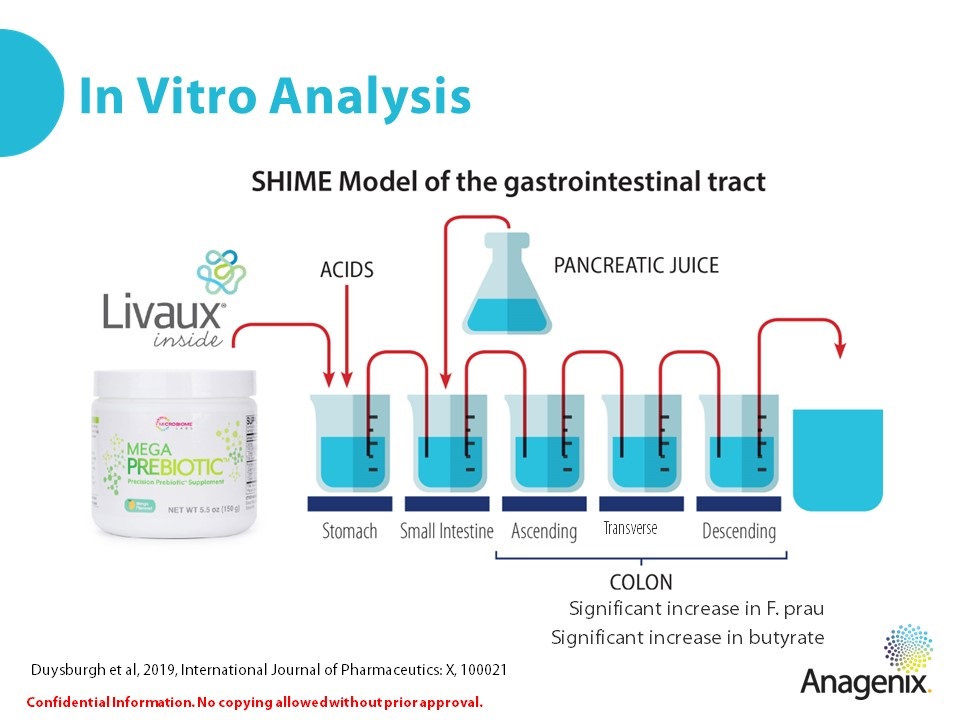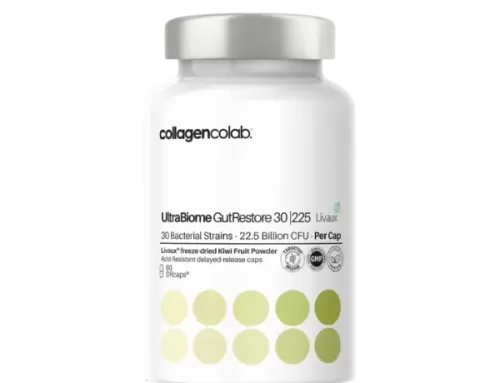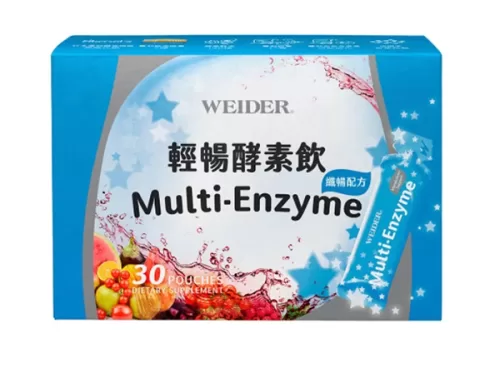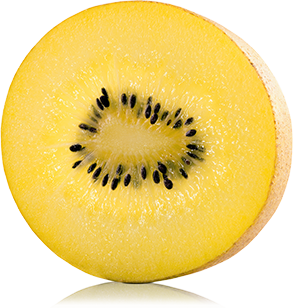An M-SHIME® gut model using Microbiome Labs® synbiotic formulation including Livaux® and Actazin® shows an increase in the numbers of good gut bacteria.
Livaux® and Actazin® as a part of a synbiotic formulation were evaluated in an artificial gut system called M-SHIME®. They were shown to increase the relative abundance of Faecalibacterium prausnitzii (1), the good gut bug we call F. prau. This supports the findings from a recent clinical study using Livaux. The clinical study showed significant increases in F. prau in the faeces of participants (2). The reason this M-SHIME result was good was because it explained the clinical results using a simulation of the inner workings of our guts. This allowed the scientists to demonstrate that Livaux supports the growth of F. prau in regions of the colon not (normally) accessible for sampling without extreme medical procedures.
Livaux and Actazin are New Zealand gold and green kiwifruit powders, respectively. Both are prepared by proprietary processing methods to retain all the nutritional and functional qualities of the fruit. A key component of kiwifruit relevant to this study is pectin, a plant cell wall polysaccharide and dietary fibre (3). Pectin is one of the most complex and diverse polysaccharides in nature. It comprises many different sugars and many different linkage types between those sugars (4). The gentle processing to create Livaux and Actazin retains that structural and compositional diversity of pectin. This makes them unique amongst commercially available pectins.
Pectin escapes digestion in our small intestine and heads to our colon intact. In our colons, it serves as food for the good gut bacteria who reside there. These bacteria consume sugars using a process called fermentation. Fermentation of Livaux and Actazin pectin is slow and occurs throughout the length of the colon. This is because of the Livaux and Actazin pectin complexity and diversity, which makes disassembling it difficult (4). This means that this pectin feeds a diverse array of the resident bacteria. A diverse bacterial make up of our gut microbiomes is one of the hallmarks of good gut health (5). One of these resident bacteria which is known to consume pectin is F. prau (6).
A synbiotic is a combination of prebiotics and probiotics.

The International Scientific Association of Probiotics and Prebiotics (ISAPP) have defined a prebiotic as “a selectively fermented ingredient that results in specific changes in the composition and/or activity of the gastrointestinal microbiota, thus conferring benefit(s) upon host health” (7). Pectin is a prebiotic. Other prebiotics include non-digestible polysaccharides such as resistant starch (so-called because it resists small intestinal digestion), and fermentable polysaccharides such as xylo–oligosaccharides (XOS), galacto–oligosaccharides (GOS), fructo–oligosaccharides (FOS) and inulin (an exceptionally long variant of FOS).
XOS, GOS and FOS are chains of the sugars xylose, galactose, and fructose, respectively. The Microbiome Labs synbiotic used in the M-SHIME study contains their MegaPre™ prebiotic blend, which includes XOS from corn, GOS from cow milk, and Livaux and Actazin pectin. Unlike Livaux and Actazin pectin, XOS and GOS are rapidly fermented early in the colon. Pectin is fermented more slowly, all the way through the colon.
The definition of probiotics supported by ISAPP is “live microorganisms that, when administered in adequate amounts, confer a health benefit to the host.” Probiotics are well defined and characterised bacteria with scientifically demonstrated effects on health. They may be administered in mixtures of different strains of bacteria, or as single strains, but they are always well defined and named strains. In contrast, the live microorganisms that may be found in traditional fermented foods (e.g., kombucha, kimchi and sauerkraut) typically do not meet the ISAPP level of evidence required to be called probiotics, especially as they are often uncharacterised mixtures. They are not always well defined and named strains.
The Microbiome Labs synbiotic contains their MegaSporeBiotic™ mixture of defined Bacillus strains. These bacteria are non-pathogenic (safe). They can form spores which enable them to survive transit through the harsh conditions of our digestive tract and then grow in our colon. By growing in our colon, they favourably alter the gut conditions in a manner which confers health benefits.
Faecalibacterium prausnitzii is a commensal gut bacterium. Commensal means “to eat at the same table” and is used to refer to our resident bacteria who co-exist with us in our colon. They ferment the material we cannot digest and do us no harm. Often, they do good. F. prau is regarded as healthy for several reasons (8), not least being production of butyrate. Additionally, gut complaints such as inflammatory bowel disease (IBD) are correlated with lower numbers of F. prau, strongly suggesting that increased numbers of these bacteria confer protection from these disorders (9). As anaerobic bacteria which cannot tolerate oxygen, they are unfortunately hard to administer live in adequate amounts to qualify as probiotics. However, it is fortunate that they do respond to pectin in our colon, and Livaux pectin in particular!
Butyrate is a bacterial fermentation by-product (10). For example, lactic acid bacteria (LAB) such as the yoghurt bacteria Lactobacillus and Bifidobacteria produce lactic acid, which in biological systems exists as lactate. Similarly, Saccharomyces yeast fermenting sugars produce ethanol as a by-product. F. prau is a member of the subset of bacteria that produce butyrate. Butyrate is absorbed by our colonocytes, the epithelial (skin) cells lining our colon. Colonocytes use it instead of glucose for respiration (to produce energy) (11).
Excess butyrate and its respiration by-products accumulate within the cells to modify cell gene expression. This regulates colonocytes’ natural life cycle progression through proliferation/growth (at low butyrate concentrations) to apoptosis (programmed cell death, at higher butyrate concentrations) (11). As cancerous colonocytes do not use butyrate for energy they accumulate higher concentrations, advancing the programmed cell death messages. This makes butyrate naturally protective against colon cancer (12). Given that colon cancers are more prevalent in the distal colon, furthest from where food enters, it is obviously beneficial to consume foods which prolong fermentation to the distal colon and promote butyrate production by bacteria such as F. prau there. For more information on butyrate, check out our blog Postbiotic: Butyrate Promote Colon Cancer Cell Death.
M-SHIME stands for Mucosal Simulator of the Human Intestinal Microbial Ecosystem (1). It models human gut digestion and fermentation of food while allowing real-time access to the inner goings on. This access is valuable, as these samples cannot be collected from human clinical participants without invasive medical procedures. The SHIME comprises five sequential bioreactor vessels simulating the stomach, small intestine, proximal colon, transverse colon, and distal colon, in that order (13). A constant flow of liquid moves through the vessels, simulating the natural movement of gut contents in a person.
The last three bioreactors are set up to contain human colonic bacteria (obtained from the faeces of healthy donors). There are different colonic bioreactors because of the natural partitioning of the colon, each with different conditions supporting the growth of different stable populations of gut bacteria (14). Food being evaluated in this system is entered into the first stomach bioreactor vessel where it will start being digested. It will be further digested in the small intestine vessel. Material which survives digestion progresses to the three colonic vessels. Here this material is sequentially fermented as it progresses through these vessels. Samples can be removed from each of these five vessels throughout the course of an experiment, which in this case was three times per week over the two weeks to establish pre-intervention baseline readings followed by four-week intervention with the synbiotic combination containing Livaux pectin.
The synbiotic combination containing Livaux and Actazin pectin showed significant, large increases in butyrate in all three (proximal, transverse, and distal colonic) SHIME compartments. There were significant corresponding increases in F. prau relative abundances (percentage of the total bacteria) in the second (transverse colon) and final (distal colon) vessels. Similar increases were not seen using the same probiotic mix in the absence of the prebiotic mix, proving these increases were due to the prebiotic being fermented.
Why do we attribute the F. prau growth to Livaux and Actazin pectin and not the other (XOS and GOS) prebiotic components? Because the balance of probability based upon previous science supports this:
Firstly, as mentioned previously we know that from people consuming Livaux (without XOS or GOS) their faecal F. prau levels are elevated (2), showing the increased abundance of this bacterium in their distal colons prior to voiding.
Secondly, F. prau can utilise highly methylated pectin core galacturonate as fuel (6), and Livaux gold kiwifruit pectin is highly methylated (3). Access to the pectin core is granted by the cooperative action of other commensal bacteria (8), which will take time. Hence the shifting of fermentation to the last two of the three compartments.
Thirdly, F. prau uses xylans poorly (6), and clinical meta-analyses suggests they do not benefit from GOS either (15). Finally, XOS and GOS, as short chain oligosaccharides comprising an average of 5-7 sugars in length, are rapidly fermentable. GOS is a well-recognised FODMAP, which are “fermentable oligosaccharides, disaccharides, monosaccharides or polyols” commonly associated with fast fermentation and resulting gas and bloating in the proximal colon (16). Thus, XOS and GOS would have been used by the bacteria in the proximal colon compartment (colon vessel one of SHIME).
The significant increases in butyrate are no doubt majorly attributable to the XOS and GOS fermentation, which would have contributed to additional bacterial numbers and activity. These additional bacterial numbers and activity support the degradation of pectin to make it accessible for F. prau, but the growth of F. prau itself is from Livaux and Actazin pectin.
Given the health-promoting role of F. prau in our gut, this is an important result, and demonstrates the importance for the internal health of our transverse and distal colons of consuming complex and slowly fermented prebiotics such as Livaux and Actazin pectin.
References
- Verhoog et al 2019 Nutrients 11 (7), 1565.
- Gibson and Shepherd 2010, Journal of Gastroenterology and Hepatology, 25 (2), 252-258.
- Duysburgh et al, 2019, International Journal of Pharmaceutics: X, 100021
- Blatchford et al, 2017, Journal of Nutritional Science, 6, E52
- Carnachan et al 2011, Food Chemistry 133 (1), 132-139
- Ndeh et al 2017 Nature 544, 65-70.
- Shanahan 2010, Gastroenterology, 139, 1808-1812.
- Lopez-Siles et al, 2011, Applied and Environmental Microbiology 78 (2), 420-428
- Gibson et al 2010, Food Sci. Technol. Bull. Funct. Foods 7, 1–19.
- Lopez-Siles et al 2017, The ISME Journal, 11, 841-852
- Cao et al, 2014, Gastroenterology Research and Practice, Article ID 872725
- Roediger, 1980, Gut 21 (9) 793-798
- Donohoe et al 2011 Cell Metabolism 13 (5) 517-526
- Bultman 2014 Clin Cancer Res 20 (4): 799-803.
- Molly et al 1993 Applied Microbiol. Biotechnol. 39, 254-258.
- Possemiers et al 2004 FEMS Microbiol. Ecol. 49, 495-507.










